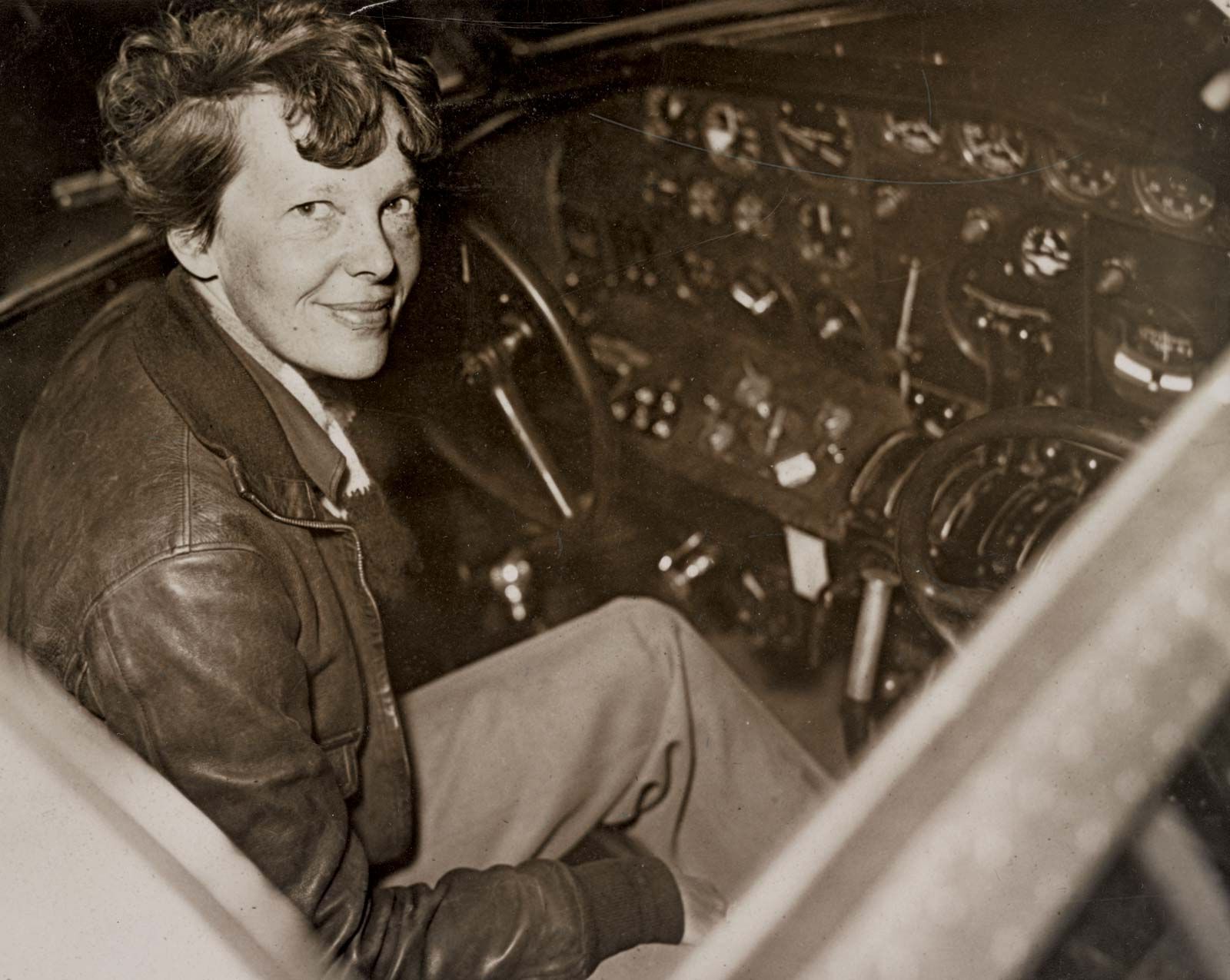
Who was Amelia Earhart? She was a pioneering aviator and author who became the first woman to fly solo across the Atlantic Ocean. Born in 1897, Earhart's adventurous spirit and determination broke barriers in a male-dominated field. Her mysterious disappearance in 1937 during an attempt to circumnavigate the globe has intrigued people for decades. Why does she matter? Earhart's legacy inspires countless individuals to pursue their dreams, regardless of societal expectations. Her life story is a testament to courage, innovation, and resilience. Ready to learn more? Here are 25 fascinating facts about Amelia Earhart that highlight her incredible journey and enduring impact.
Early Life and Education
Amelia Earhart's early years shaped her adventurous spirit and determination. Here are some fascinating facts about her beginnings.
-
Born on July 24, 1897, in Atchison, Kansas, Amelia Mary Earhart was the daughter of Samuel "Edwin" Stanton Earhart and Amelia "Amy" Otis Earhart.
-
Amelia's interest in adventure began early. At the age of 10, she built a homemade roller coaster with her uncle using a wooden ramp and a wooden box.
-
She attended six different high schools due to her family's frequent relocations, which helped her adapt to new environments quickly.
-
Earhart's first encounter with an airplane was at the Iowa State Fair in 1908. She was not impressed, describing it as "a thing of rusty wire and wood."
-
Amelia initially pursued a career in medicine, enrolling as a pre-med student at Columbia University in 1919.
Aviation Career Begins
Amelia's journey into aviation was nothing short of inspiring. Her passion for flying took off in her early twenties.
-
In 1920, Amelia took her first airplane ride in California, which cost $10. This 10-minute flight changed her life forever.
-
She saved $1,000 for flying lessons by working various jobs, including as a truck driver and a photographer.
-
Earhart's first flying instructor was Neta Snook, one of the few female aviators at the time.
-
In 1922, she set her first record by flying solo to an altitude of 14,000 feet, the highest altitude achieved by a female pilot at that time.
-
Amelia bought her first plane, a bright yellow Kinner Airster, which she nicknamed "The Canary."
Breaking Barriers
Amelia Earhart was a trailblazer in aviation, breaking numerous records and barriers for women in the field.
-
In 1928, she became the first woman to fly across the Atlantic Ocean as a passenger, alongside pilots Wilmer Stultz and Louis Gordon.
-
Earhart was the first woman to receive the Distinguished Flying Cross, awarded for her solo transatlantic flight in 1932.
-
She set a speed record in 1930, flying a Lockheed Vega from Los Angeles to Mexico City in 13 hours and 23 minutes.
-
In 1931, Amelia became the first president of The Ninety-Nines, an international organization of female pilots that still exists today.
-
She was the first person to fly solo from Honolulu, Hawaii, to Oakland, California, in 1935, a distance of about 2,408 miles.
Personal Life and Legacy
Amelia's personal life and legacy continue to inspire many. Her achievements and mysterious disappearance have left a lasting impact.
-
Amelia married George P. Putnam, a publisher and publicist, in 1931. She referred to their marriage as a "partnership" with "dual control."
-
Earhart was an advocate for women's rights and wrote articles promoting female pilots and equal opportunities.
-
She authored two books about her flying experiences: "20 Hrs., 40 Min." and "The Fun of It."
-
Amelia was a visiting faculty member at Purdue University, where she counseled women on careers and inspired many to pursue aviation.
-
Her disappearance during an attempt to circumnavigate the globe in 1937 remains one of the greatest unsolved mysteries in aviation history.
The Final Flight
Amelia's last flight was an ambitious attempt to fly around the world. Here are some key facts about this fateful journey.
-
Earhart and her navigator, Fred Noonan, departed from Miami on June 1, 1937, in a Lockheed Electra 10E.
-
By the time they reached Lae, New Guinea, they had completed 22,000 miles of their journey, with only 7,000 miles remaining.
-
On July 2, 1937, Amelia and Fred took off from Lae, heading for Howland Island, a tiny island in the Pacific Ocean.
-
Despite extensive search efforts, neither Earhart, Noonan, nor their plane were ever found, leading to numerous theories about their fate.
-
Amelia Earhart's legacy lives on, inspiring countless individuals to pursue their dreams and break barriers, just as she did.
Amelia Earhart's Legacy
Amelia Earhart's story continues to inspire. Her achievements in aviation broke barriers and set new standards. She wasn't just a pilot; she was a symbol of courage and determination. Earhart's mysterious disappearance still captivates many, sparking endless theories and investigations. Her legacy goes beyond her flying records. It includes her advocacy for women in aviation and her role as a trailblazer in a male-dominated field.
Her life reminds us that pushing boundaries and challenging norms can lead to extraordinary accomplishments. Earhart's influence remains strong, encouraging new generations to dream big and aim high. Her adventurous spirit and fearless attitude serve as a beacon for those who dare to explore the unknown. Amelia Earhart's legacy is a testament to the power of perseverance and the impact one person can have on the world.
Was this page helpful?
Our commitment to delivering trustworthy and engaging content is at the heart of what we do. Each fact on our site is contributed by real users like you, bringing a wealth of diverse insights and information. To ensure the highest standards of accuracy and reliability, our dedicated editors meticulously review each submission. This process guarantees that the facts we share are not only fascinating but also credible. Trust in our commitment to quality and authenticity as you explore and learn with us.


